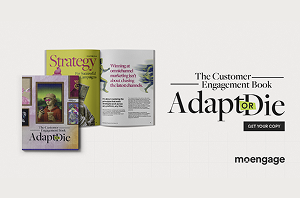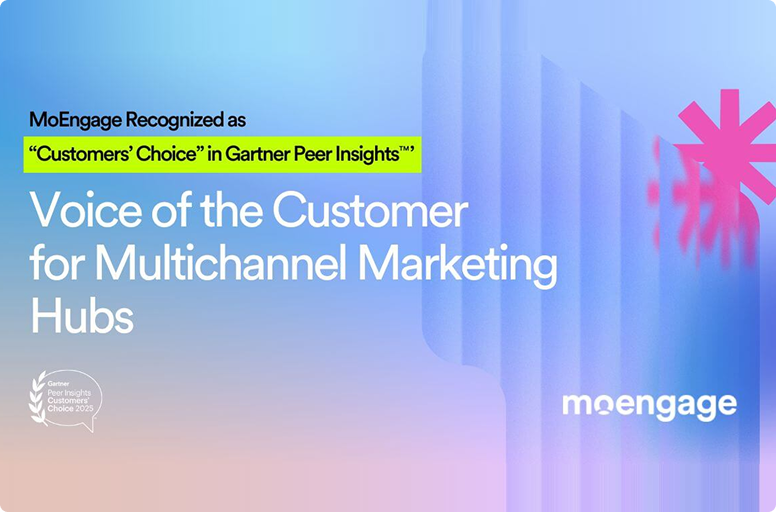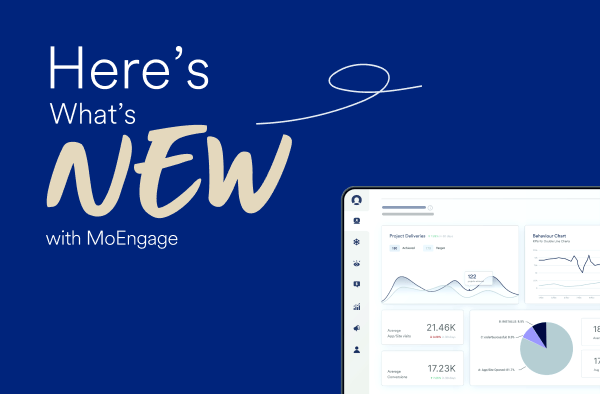Customer Engagement 2023: Future of Retail and D2C Experience
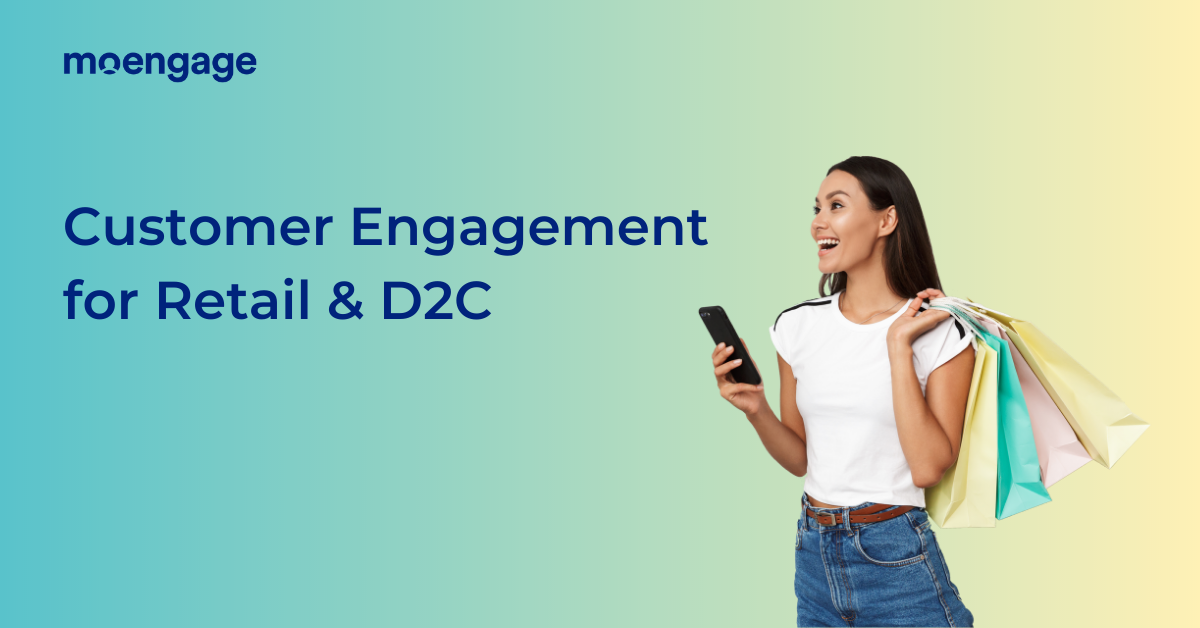
Reading Time: 7 minutes
The pandemic of 2020 has brought unexpected changes to the retail and D2C markets. The role of mobile applications, self-checkouts, and product innovations have all seen sudden acceleration over the last two years. This is drastically changing the future of retail.
To get a complete insight and understanding of the situation, we spoke to a few retail and D2C experts. Esha Jhangiani from Nestle, Vinay Dikshith from Schwarz Gruppe, and Laureen Ellison from Diageo got into a conversation with Shalini Devji and Mike Barclay from MoEngage to decipher the changes in customer engagement. They also considered some key retail strategies to be implemented for the future of retail and D2C.
In this article, you’ll learn an overview of the facts, insights, and experiences from the conversation. This will help you understand the following:
|
1️⃣ current challenge in the retail and D2C industry, 2️⃣ customer engagement for the future of retail and D2C, and 3️⃣ building connected customer experience across all channels. |
Challenges in Today’s Retail
Many brands consider the outbreak of COVID-19 as one of the most challenging moments for retail. But what do the brands encounter with these challenges? Here are some of the issues:
1. Limited Customers
With the coronavirus outbreak in 2020, most stores worldwide had a limit on the number of consumers permitted in the store at a given time. With more than 50% of European and UK shoppers preferring to stay indoors, the rule to have limited numbers is affecting the whole retail industry. Despite stores being open in countries like Poland, there were only five consumers at any time.
Other customers who would visit the store often made the switch to E-commerce apps or store pickups.
2. Provision For Click and Collect
This problem forced the adoption of click-and-collect or setting up E-commerce networks. This change was primarily a challenge in the FMCG sector since hundred-thousand articles need categorizations and updating.
A brand like Diago found it harder to shift to D2C since they mainly worked with retailers. Setting up a new D2C experience was as good as starting from scratch.
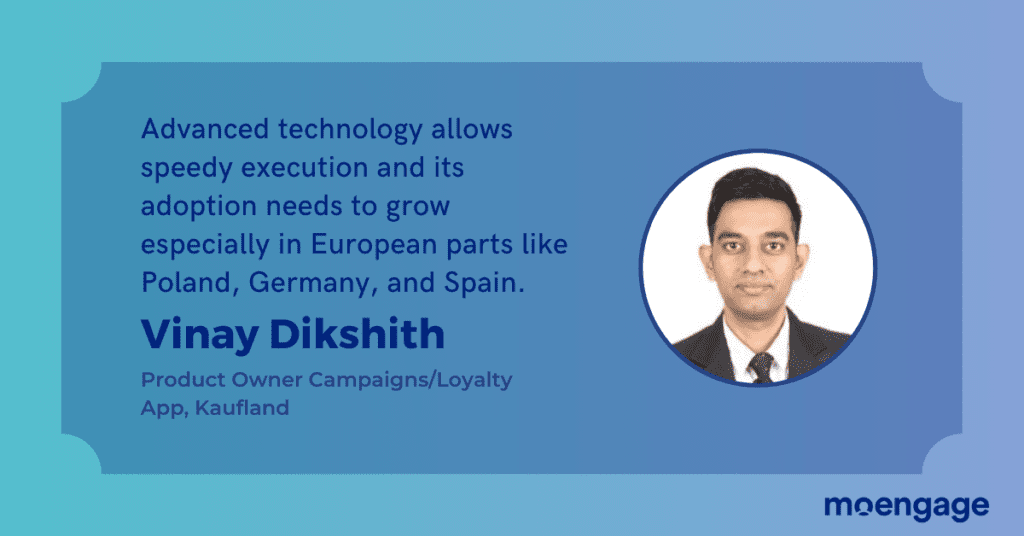
3. Need For Product Innovation
These unusual times also demanded an acceleration in product innovation. A new problem in the world opened up the demand for touch-free, hygienic, safer, and cheaper products.
For example, Nestle created a touchless coffee machine that works from a mobile application. This innovation reached a fast track since the pandemic boosted its demand. More businesses were forced to reassess their workforce and fund allocation.
Customer Engagement and the Future of Retail
Once we have understood the significant issues/challenges, it’s essential to address the ever-growing yet significant customer engagement impact on the future of retail. What are a few things a brand can do to enhance customer engagement? While the options are endless, we focus on two interesting approaches:
1. Create loyalty programs
The number one approach is to invest in creating loyalty programs. With such programs in place, brands can ease shopping by removing certain limitations like shipping charges or priority shipping, extra offers/discounts, and availability of products.
For a Hypermarket brand like Lidl under the Schwarz Gruppe, the biggest challenge with customer engagement was moving the process online. While ensuring sales of food products were happening, as that was the biggest roadblock.
Lidl fixed this issue by creating a loyalty program system. This program gave customers a 10% discount on any product once they signed up on the app. The brand boosted engagement by observing more app sign-ups and giving customers a reason to shop. Sign-ups provided the brand with a chance to start using its customer data for further engagement.
A consumer bound at home could now consider shopping more often as an incentive was added to the mix.
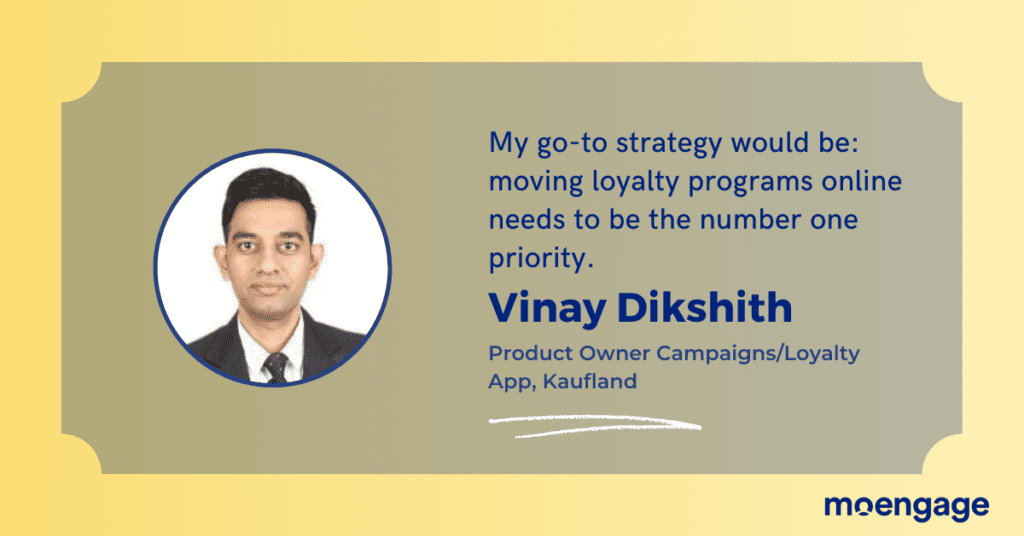
Build customer journey for each product
For example, Nestle usually focused on coffee sales restricted to the first coffee before work. Most Europeans got their second coffee in cafes or workplaces. This changing work culture (work from home) pushed for a better supply chain in the D2C network.
For this, Nestle had to double down on their websites and apps. They built better engagement journeys by creating a customer journey for each product.
2. Creating content for customers
With more consumers locked into their homes, relevant content makes a significant difference when engaging with consumers. “Brands need to enable access to products, consumers, and content. Engagements cannot just remain as sales and advertising,” said Lauren Ellison from Diageo.
Using actors, comedians, and channels like TikTok will make a difference. Digital experiences and relatable content can make a lot of difference. Some companies are also increasing awareness of secondary products.
For example, Diageo could use its website to sell tours to its distilleries and allow consumers to create their blends. The more unique the customer engagement, the better the results.
Future of Retail: It’s All About a Memorable Customer Experience
1. Boost reactivations
Experts in marketing suggest that a customer who just purchased a product is more valuable for a resale.
Perfect customer engagement primarily comes down to the level of personalization applied. Adidas, for example, focused on ‘reactivations of consumers.’ They plan consumer journeys that keep the customer occupied for 60 days after they purchase one of their products.
“If a customer buys something, they also tend to come back and buy again in seven days, so we re-target them,” said Vinay. “In retail, we segregate shoppers as ‘big spender’ or a ‘minimal spender’ and engage them accordingly.”
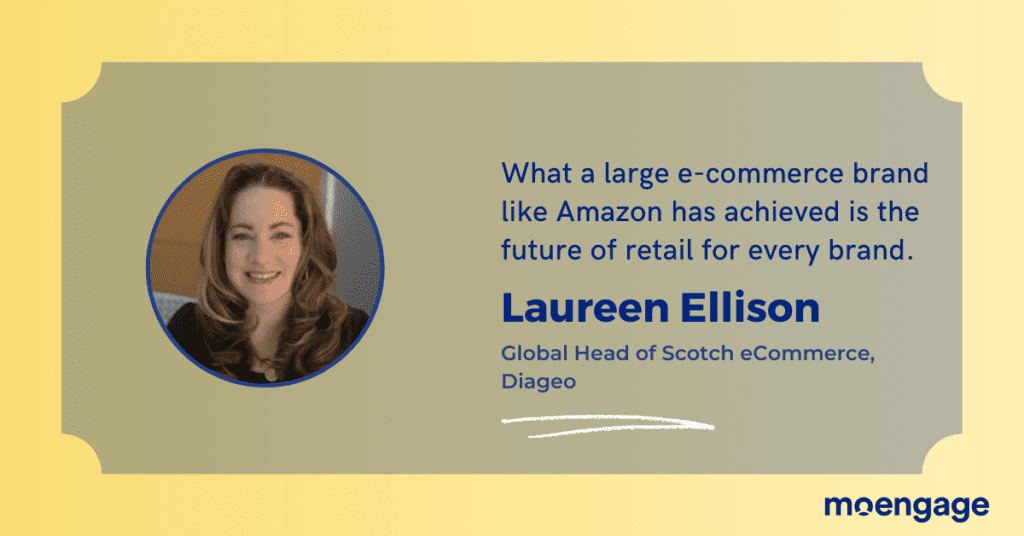
2. Managing both Retail and D2C
Some brands manage their inventory on both their platform and via retailers. In such cases, they must create a difference in service or price to keep sales active on both fronts.
For example, consider a packet of infant nutrition from Nestle. They are sold in all major stores and hypermarkets. However, when purchased using their website/applications, the consumer can pick up larger-sized packets unavailable at the stores.
D2C should be incentivized since it will always give the brand more data on the customer. Giant hypermarkets cannot collect data points on consumers directly. “Hypermarkets do not have the availability of finer data points; we only have information like first name and last name, which seems irrelevant for any analytics,” said Vinay.
Take Tesco’s example—in Tesco UK, they have a loyalty program to help gather data on how much a consumer tends to spend, the type of products purchased, and the most likely used discounts. So it is safe to say additional data can be gathered. However, brands need a fair exchange with the customer, i.e., a great loyalty program in return for data.
3. Making products special
To make an experience memorable, the product has to stand out from the clutter. Make products so exciting and unique to drive customers to apps and websites.
Consider the personalized Kit Kat chocolates in Japan. Customers can always pick up a Kit Kat packet at the store, but the online tool on their website allows customers to customize their flavors.
HAIG CLUB is another interesting use case in personalization, a single-grain whiskey part owned by David Beckham. The selling of such a brand requires an influencer approach, and the brand just did that by using David Beckham himself. This approach helped the brand showcase “special edition products” in a new light allowing them to reduce planning and strategy time in half.
4. A Smooth Mobile Experience for Customers
The best way to improve the role of customer engagement in the future of retail is by using mobile phones and apps. Since the pandemic, there has been a need to move to the “mobile-first” approach.
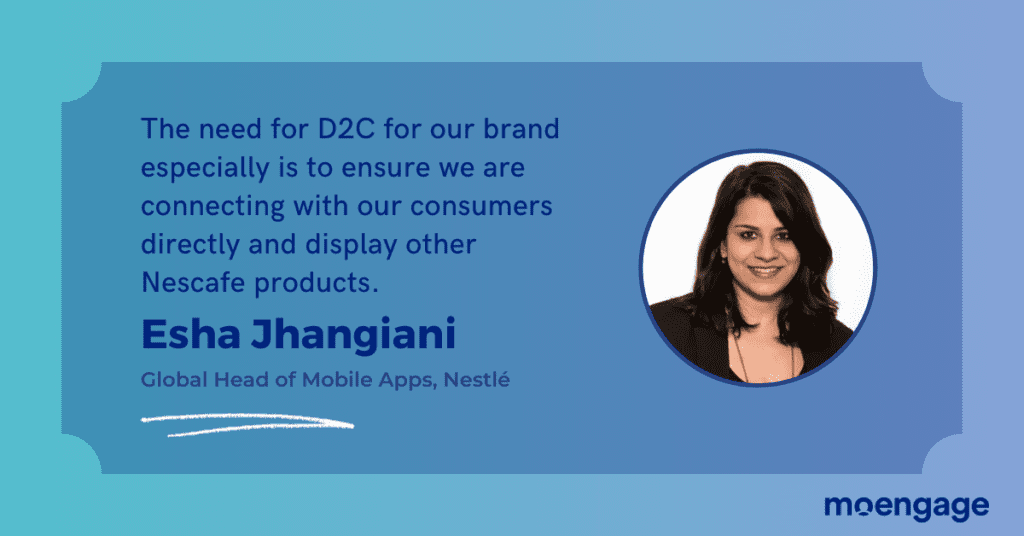
We can break this down into three steps:
a. Getting them on the app
The first obstacle to switching to mobile is getting new customers to sign-up. There are two ways to promote this practice:
|
➡️ The concept of a Digital Loyalty Card on the phone app is an ideal incentive. This approach helps to build better customer engagement and gives them a reason to move to the app in the first place. ➡️ Another simple trick is to provide a discount or offer. Consider the example of a Kaufland franchise in Romania. Customers who joined the app got a 10% basket discount. This drove more customers to the app and boosted overall app adoptions. |
b. Creating a smooth mobile experience
Once on the app, how do you encourage the customer to stick along? How do you keep them from quitting after using the offers? Here are some ideas to consider:
|
➡️ Adding partners to the loyalty program is very helpful. In the case of Kaufland, they collaborated with brands like Shell and Netflix to add more value to each sign-up. ➡️ The apps should enable click-to-connect at the store and access to the E-commerce platform. ➡️ Adding a scan-to-pay feature is another valuable add-on during the pandemic. This approach assists consumers in conducting self-checkouts using their phones. ➡️ One example of the future of retail is using these applications for e-receipt. The practice is better for the environment and enables touchless billing. On the flip side, it allows brands to collect email addresses which can then be used to engage with consumers in many ways. |
c. Value-adds from the mobile experience
Lastly, one must determine what makes the apps better than all the others in the race to retain customers.
|
➡️ Gamification of the app helps to retain an audience. For example, on the Kaufland app, a sale above €35 unlocked features like spin-the-wheel, a discount, or a scratchcard. ➡️ A social message is also an interesting approach. For instance, there is an emphasis on recycling bottles in Germany. Using the app, stores promoted this initiative and provided discounts or donation options in return. ➡️ Use push notifications to help customers and not annoy them. For example, please provide relevant offers and discounts once customers are in/near the store. |
Retail Trends That are Here to Stay
Many trends in the retail and D2C space have come from the onset of the pandemic. But what retail trends are here to stay? We can break them down into the following:
- The use of storytelling in marketing is going to be a huge game-changer. Brands, now more than ever, depend more on building emotions than simply selling products and services.
- Personalization of customer engagement is the way forward.
- Changing strategy and being relevant for the times is a move many will make.
- The integration of both offline and online channels is going to become the new normal. The lines between brick-and-mortar stores and digital spaces will soon blend into one ecosystem.
- Seamless ordering from online channels will soon become a must-have. Customers do not wait for load times and poorly designed baskets.
Here’s What You Can Do Next
|

